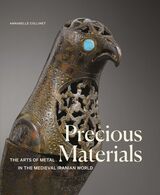
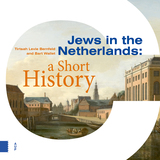
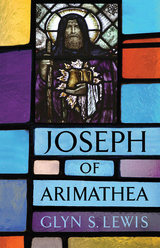
“This author testifieth Joseph of Arimathea to be the first preacher of the word of God within our realms. Long after that, when Austin came from Rome, this our realm had bishops and priests there-in, as is well known to the learned of our realm.”—Elizabeth I, in a 1559 letter to Roman Catholic bishops on the precedence of the Church of England
The name Joseph of Arimathea is generally well known, either from the accounts in each of the New Testament Gospels that tell of his providing a tomb for the burial of Jesus; from his depictions in medieval and Renaissance art; from his associations with the Holy Grail that later found greater expression in medieval Arthurian stories; and even from the story that has endured in western Britain that as a trader in tin, copper, and lead, he had traveled often to the region—and with him came the Christian religion. These stories are strongly rooted, despite the lack of impeccable source material—so much so that Elizabeth I used Joseph of Arimathea as proof that the Church of England predated the Catholic church in her country. In Joseph of Arimathea Glyn S. Lewis brings these fragments together in order to provide as fully as is possible what we can infer about this first-century apostle.
The author first discusses Arimathea, a town that has yet to be positively identified. He then reviews the accounts of Joseph’s entombment of Jesus that appear in each of the four Gospels. From these earliest references, the author next consults the literary and oral tradition evidence of Joseph’s passage by ship to the south of France among a group of fugitives escaping persecution for being Christians, and his early visits to Britain as a trader in precious ores. These voyages are said to have brought him to the area around Glastonbury, which became a flourishing monastery in the Middle Ages. Whether or not Joseph of Arimathea visited Britain, his story remains an enthralling and fascinating mystery.
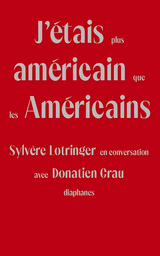
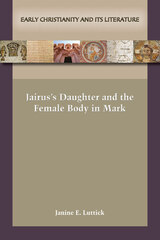
Jairus’s Daughter and the Female Body in Mark demonstrates that ubiquitous and significant depictions of children in the literature and material culture of the first century CE shaped the mindsets of the Gospel of Mark’s original audience. Through a detailed analysis of the story of Jairus’s daughter in Mark 5 and of the archaeological remains depicting female children, Janine E. Luttick reveals how ancient hearers of this story encountered an image of a female child that communicated ideas of hope to Jesus’s followers and in turn how readers today can understand the authority of Jesus, the domestic structures of early Christianity, and the suffering and loss experienced by some early Christians.


Macdonald follows Hendrix from the Pacific Northwest to the California coast to New York City, from his musical beginnings as a youth in Seattle to his launch, touring career, and up until his last weeks in London. She charts the surroundings of a genuine inner-city dweller, a nighthawk and wanderer who roamed the streets and alleys of everyday neighborhoods and haunted seedy basement bars and intimate clubs—as performer or audience member. She explores how the rumble, uproar, babble, and discord of urban life inspired Hendrix to incorporate noise into his powerful repertoire. Tracking the variety of places where Hendrix played—from open-air stages to dilapidated ballrooms—she shows how space eventually became a process, as Hendrix would eventually commission an architect and sound engineer to build an urban recording studio that would capture the reverberation, bounce, sustain, and echo that he heard and played.
Crackling with the electrifying sound of explosive creativity, Jimi Hendrix explores place and space to offer fascinating new insight into Hendrix’s resounding talent.
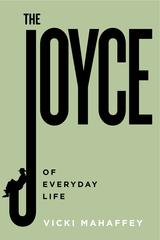
The Joyce of Everyday Life teaches us how to interpret seemingly mundane objects and encounters with openness and active curiosity in order to attain greater self-understanding and a fuller appreciation of others. Through a close examination of Joyce's joyous, musical prose, it shows how language provides us with the means to revitalize daily experience and social interactions across a huge, diverse, everchanging world.
Acclaimed Joyce scholar Vicki Mahaffey demonstrates how his writing might prompt us to engage in a different kind of reading, treating words and fiction as tools for expanding the boundaries of the self with humor and feeling. A book for everyone who loves language, The Joyce of Everyday Life is a lyrical romp through quotidian existence.
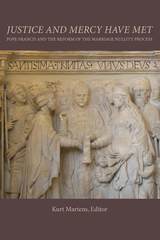

John Berryman - American Writers 85 was first published in 1969. Minnesota Archive Editions uses digital technology to make long-unavailable books once again accessible, and are published unaltered from the original University of Minnesota Press editions.
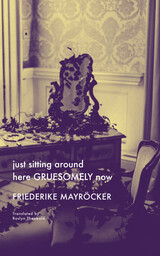
It is summer in this book, even if nature often does not hold to summer. The flowers either have tiny buds or have long since withered. It is summer in the book, asserts Mayröcker’s work, because the summer light is switched on: sometimes blazingly bright, sometimes darkened with thunderclouds. At the same time, there is a magical light in this writing. In these stream-of-conscious prose poem meditations, Mayröcker formulates a poetics of simultaneity of all that is not: “not the scenes I remember, rather, it is the sensations accompanying those scenes.”
Strictly composed in form and language while luxuriantly proliferated in daydreams and nightmares, just sitting around here GRUESOMELY now is a significant volume in the radical late work of the great Viennese poet.
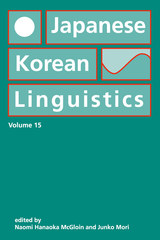
Japanese and Korean are typologically quite similar languages, and the linguistic phenomena of the former often hve counterparts in the latter. These collections from the annual Japanese/Korean linguistics conference include essays on the phonology, morphology, syntax, semantics, historical linguistics, discourse analysis, prosody, and psycholinguistics of both languages. Such comparative studies deepen our understanding of both languages and will be a useful reference to students and scholars in either field.
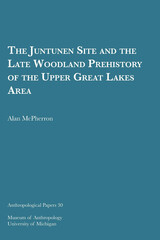

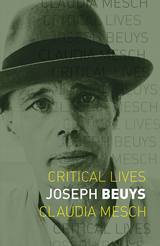
Claudia Mesch analyzes the aspects of Beuys’s works that have most offended audiences, especially the self-woven legend of redemption that many have felt was a dubious and inappropriate fantasy for a former Nazi soldier to engage. As she argues, however, Beuys’s self-mythology confronted post-traumatic life head on, foregrounding a struggle for psychic recovery. Following Beuys’s exhibitions in the 1970s, she traces how he both expanded the art world beyond the established regional centers and paved the way for future artists interested in activism-as-art. Exploring Beuys’s expansive conceptions of what art is and following him into the realms of science, politics, and spirituality, Mesch ultimately demonstrates the ways that his own myth-making acted as a positive force in the Germany’s postwar reckoning with its past.
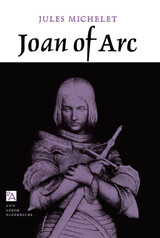
The holy mission of the Maid of Orleans is recreated in this, one of the greatest of the books on Joan. Jules Michelet captures the hardships of battle, the glory of victory, the disillusion of imprisonment. Her betrayal and martyrdom at the stake have an enduring mood of beauty and brutality. Albert Guérard's sensitive translation offers the first complete English rendition of this classic nineteenth-century work.
Jules Michelet, 1798-1874, noted French historian, is perhaps best known for his Histoire de la révolution française (1847-53) and his Histoire de France (1833-67).
The late Albert Guérard was professor of comparative literature and lecturer in French civilization at Stanford University. His many books include Europe Free and United, Napoleon III, Education of a Humanist, and France: A Modern History.

J.D. Salinger - American Writers 51 was first published in 1965. Minnesota Archive Editions uses digital technology to make long-unavailable books once again accessible, and are published unaltered from the original University of Minnesota Press editions.
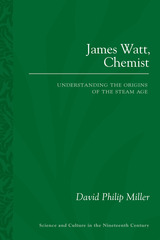
Part I of the book—"Representations"—examines the way James Watt has been portrayed over time, emphasizing sculptural, pictorial and textual representations from the nineteenth century. As an important contributor to the development of arguably the most important technology of industrialization, Watt became a symbol that many groups of thinkers were anxious to claim. Part II—"Realities"—focuses on reconstructing the unsung "chemical Watt" instead of the lionized engineer.


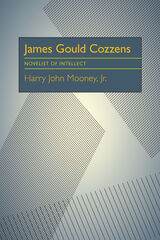
During the early 1930s, after James Gould Cozzens had published four romantic novels and then withdrawn them from circulation, he wrote the first three of what Brenden Gill called his eight “canonical works.” But it was only after the publication of By Love Possessed in 1957 that he achieved wide popularity. Mooney closely examines each of Cozzens’ novels, isolating and defining his main themes and addressing the critical acclaim and condemnation of his works.
Among the novels Mooney analyzes are: S.S. San Pedro, Castaway, The Last Adam, Men and Brethren, Ask Me Tomorrow, The Just and the Unjust, Guard of Honor, and By Love Possessed.


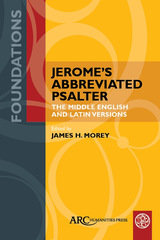
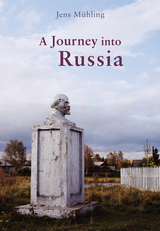
Unveiling a portion of the world whose contradictions, attractions, and absurdities are still largely unknown to people outside its borders, A Journey into Russia is a much-needed glimpse into one of today’s most significant regions.

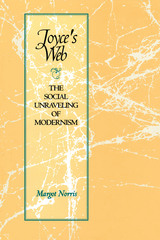
James Joyce has long been viewed as a literary modernist who helped define and uphold modernism's fundamental concepts of the artist as martyr to bourgeois sensibilities and of an idealistic faith in artistic freedom. In this revolutionary work, however, Margot Norris proposes that Joyce's art actually critiques these modernist tenets by revealing an awareness of the artist's connections to and constraints within bourgeois society.
In sections organized around three mythologized and aestheticized figures in Joyce's works—artist, woman, and child—Norris' readings "unravel the web" of Joyce's early and late stories, novels, and experimental texts. She shows how Joyce's texts employ multiple mechanisms to expose their own distortions, silences, and lies and reveal connections between art and politics, and art and society.
This ambitious new reading not only repositions Joyce within contemporary debates about the ideological assumptions behind modernism and postmodernism, but also urges reconsideration of the phenomenon of modernism itself. It will be of interest and importance to all literary scholars.
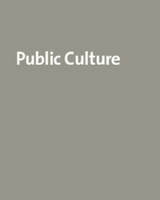
Contributors to this issue—a mix of scholars, urban planners, and artists, many of whom hail from South Africa—reveal Johannesburg to be a polycentric and international city that has developed its own cosmopolitan culture. In a detailed study of three streets in the modern precinct of Melrose Arch, one essay shows how the thoroughly commodified and marketed Johannesburg cityscape has shaped the cultural sensitivities, aesthetics, and urban subjectivities of its inhabitants, at times even overriding the historical memory of apartheid. Another essay, focusing on the emergence of a new urban culture, examines how the city itself becomes a crucial site for the remixing and reassembling of racial identities. By tracking the movement of people with AIDS to various locations in the city to seek relief and treatment, another essay reveals an urban geography very different from what is seen from the highways. Finally, through interviews and commentaries, journalists, artists, and architects of Johannesburg offer reflections on the geography and shifting culture of the city and its townships, on the complicated relationship between Johannesburg and other African cities, and on the search for an architectural style that adequately expresses the complexity of this cosmopolitan city.
Contributors. Lindsay Bremner, Nsizwa Dlamini, Mark Gevisser, Grace Khunou, Frédéric Le Marcis, John Matshikiza, Achille Mbembe, Sarah Nuttall, Rodney Place, AbdouMaliq Simone, Michael Watts
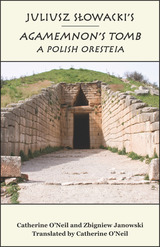

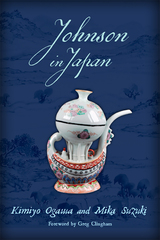
Published by Bucknell University Press. Distributed worldwide by Rutgers University Press.
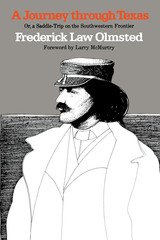
Early in the year 1854 Frederick Law Olmsted, a young New England journalist, crossed the Louisiana border and set off on horseback into the teeth of the Texas winter. In A Journey through Texas he recounts his travels along the Old San Antonio Road through East Texas' piney woods, the dry prairies further west, the chaparral of South Texas, the coastal prairies, and the rich bottomlands around Houston and Galveston.
Olmsted does not romanticize the discomforts of his trip—the monotonous food, crude housing, wet and dry northers, rough companions—yet his book reflects a sense of limitless possibility for this new and open country. The cultured Easterner remembers in relentless detail the squalor and brutality met with in parts of East Texas, but he writes fondly of the civility and cleanliness of the German settlements around New Braunfels.
In his introductory "A Letter to a Southern Friend," omitted in earlier reprints, Olmsted sets forth his views opposing the extension of slavery into the West and promoting free-soil agriculture for frontier states.
The remarkably versatile Olmsted is best known as the founder of landscape architecture in America and for works including Central Park and Stanford University.
In his Foreword, Larry McMurtry calls A Journey through Texas an "intelligent, lively, readable book, packed with keen observation and lightened by a delicate strain of humor."
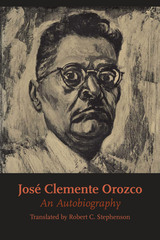
The artistic eminence of José Clemente Orozco (1883–1949) is such that he has been called “the greatest painter the Americas have produced.” In his Autobiography he also attains literary distinction. He is a writer who recounts the history of his period from a personal point of view and yet scarcely mentions himself. He is an observer who writes about the history of his country and of his country’s art, yet makes his own character implicit in the narrative.
The character that emerges is charming. It is that of a man strong but retiring, sharply critical of what he disapproves yet generous in praise of what he admires, decided in his views but modest in his assumptions and given to understatement in describing his own activities, averse to war and political struggle yet eager for conflict of ideas, always dedicated to the welfare of humanity.
Through the details of day-by-day living, he presents the panorama of the Mexican Revolution and of events in other parts of the world to which he traveled. His is a personal story of the Revolution, giving his reactions (as those of any common man) to the barbarities of war: “Insolent leaders, inflamed with alcohol, taking whatever they wanted at pistol point. . . . By night in dark streets the sound of gunplay, followed by screams, blasphemies, and vile insults. Breaking windows, sharp blows, cries of pain, and shots again.”
Orozco’s ability, as a painter, to see the details and to sense the mood of a place is apparent in his word pictures of the places he visited: “After six in the evening Paris is an immense brothel.” “London was like the seat of a noble family which had been exceedingly rich but had lost its fortune.” “Old, old Montmartre [is] a moldering cadaver . . .”
Orozco also makes some penetrating observations on art itself. Although he emphasizes individuality and freedom from tradition in art, he abhors unschooled art, especially such extremes as primitive Impressionism and other groups that lack instruction in the general principles of art, in technique, in theory of color, in perspective. He says ironically of the artistically uneducated: “Blessed are the ignorant and the imbecile, for theirs is the supreme glory of art! Blessed are the idiots and the cretins, for masterpieces of painting shall issue from their hands!” Orozco believes in education, not only for the artists but for their public. Taste in art can come only through understanding of the purpose and the techniques of art—through knowledge. Without training, public taste “mostly likes sugar, honey, and candy. Diabetic art. The greater the amount of sugar, the greater the—commercial—success.”


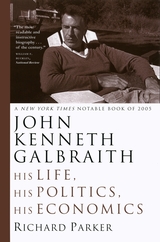
John Kenneth Galbraith (1908-2006) was one of America’s most famous economists for good reason. From his acerbic analysis of America’s “private wealth and public squalor” to his denunciation of the wars in Vietnam and Iraq, Galbraith consistently challenged “conventional wisdom” (a phrase he coined). He did so as a witty commentator on America’s political follies and as a versatile author of bestselling books—such as The Affluent Society and The New Industrial State—that warn of the dangers of deregulated markets, corporate greed, and inattention to the costs of our military power. Here, in the first full-length biography of Galbraith and his times, Richard Parker provides not only a nuanced portrait of this extraordinary man, but also an important reinterpretation of twentieth-century public policy and economic practices.
“Whatever you may think of his ideas, John Kenneth Galbraith has led an extraordinary life. . . . Doing justice to this life story requires an outsize biography, one that not only tells Mr. Galbraith’s tale but sets it on the broader canvas of America’s political and economic evolution. And Richard Parker’s book does just that.”—Economist
“Parker’s book is more than a chronicle of Galbraith’s life; it’s a history of American politics and policy from FDR through George W. Bush. . . . It will make readers more economically and politically aware.”—USA Today
“The most readable and instructive biography of the century.”—William F. Buckley, National Review
“The story of this man’s life and work is wonderfully rendered in this magnum opus, and offers an antidote to the public ennui, economic cruelty, and government malfeasance that poison life in America today.”—James Carroll, Boston Globe
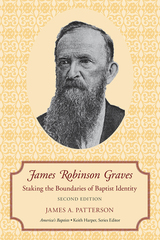
This addition to the America’s Baptists series blends biographical insight with a thematic approach that focuses primarily on Graves’s controversial beliefs about ecclesiology, Baptist history, and eschatology. Patterson divides this work into seven chapters that progress chronologically, and this updated edition includes an expanded discussion of Christian republicanism, elaborates on the question of Graves and race, and features a longer epilogue to account for recent scholarship on Graves and Landmarkism.
James Robinson Graves is an accessible introduction to the significant albeit disputed role that the Landmark tradition played in the shaping of Southern Baptist life and thought. Seminary students and scholars of nineteenth-century Southern Baptist history will find a rich new interpretation of this misunderstood figure.

Drawing on multiple interconnected scriptural and spiritual sources, the Jewish tradition of ethical reflection is intricate and nuanced. This book presents scholarly Jewish perspectives on suffering, healing, life, and death, and it compares them with contemporary Christian and secular views.
The Jewish perspectives presented in this book are mainly those of orthodox scholars, with the responses representing primarily Christian-Catholic points of view. Readers unfamiliar with the Jewish tradition will find here a practical introduction to its major voices, from Spinoza to Jewish religious law. The contributors explore such issues as active and passive euthanasia, abortion, assisted reproduction, genetic screening, and health care delivery.
Offering a thoughtful and thought-provoking dialogue between Jewish and Christian scholars, Jewish and Catholic Bioethics is an important contribution to ecumenical understanding in the realm of health care.
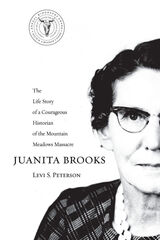
Born in 1898 in Bunkerville, Nevada, Juanita Brooks led an early life similar to that of many who grew up in isolated, tightly knit, rural Mormon communities. An early marriage suggested her future would follow a predictable course, but the death of her husband, the need to raise a young son, and a passion for knowledge led her along a different path, when at mid-life she became a well-known author after publishing The Mountain Meadows Massacre. In this book she exposed the killing of some 100 California-bound emigrants traveling through southern Utah in 1856 as an atrocity carried out by a Mormon militia with Indian allies and not solely as an Indian massacre, as it had been for so long portrayed.
Juanita Brooks was a faithful and active member of the Mormon Church, and her courage to tell the truth about this dark moment in Mormon history established her reputation as a respected historian. While there was no official church condemnation of the book, there was unofficial disapproval and Brooks was shunned by many in her community. She nevertheless doggedly pursued church authorities to revise their stand on the incidents at Mountain Meadows. The desire to tell the truth as she saw it became her hallmark, and Brooks’s life as wife, mother, teacher, community member, and undaunted historian became an uncommon story of personal stamina and intellectual courage.
Winner of the Evans Biography Award and the Mormon History Association Best Book Award.

Highlighting the importance of Jarmusch’s treatment of sound, Piazza investigates how the director’s distinctive reputation consolidated itself over the course of a thirty-year career. Based in New York, Jarmusch was able to develop a fiercely personal vision far from the commercial pressures of Hollywood. The book uses wide-ranging examples from music, film, literature, and visual art, and features interviews with many prominent figures, including Ennio Morricone, Luc Sante, Roberto Benigni, John Lurie, and Jarmusch himself.
An innovative account of a much-admired body of work, Jim Jarmusch will appeal not only to the many fans of the director but all those interested in the connections between sound and film.
Visit the author's page for this book: http://jimjarmusch-musicwordsandnoise.com


John Singleton Copley is a richly illustrated, two-volume study of the major colonial American artist who subsequently became a leading English painter.
Volume I deals with Copley's life and career in America. Containing 334 illustrations and a checklist, it combines all the available biographical data with an authoritative analysis of the artist's stylistic development, from his earliest ventures in 1753 to the achievements of his later American years. This volume also presents a detailed statistical study of Copley's American sitters that provides unusual insights into the artist-client relationship.
Volume II presents the first comprehensive investigation of Copley's career after he left America in 1774. In it, his study trip to Italy and the ensuing, highly productive years in England are thoroughly explored. This volume contains 334 illustrations, including a number of pictures never before published, and provides the only complete catalogue of Copley's post-American work.
This is the first publication in a new series, The Ailsa Mellon Bruce Studies in American Art, to be published by Harvard University Press for the National Gallery of Art, Washington, D.C.

This book presents an in-depth exploration of the administration of justice during Islam’s founding period, 632–1250 CE. Inspired by the scholarship of Roy Parviz Mottahedeh and composed in his honor, this volume brings together ten leading scholars of Islamic law to examine the history of early Islamic courts. This approach draws attention to both how and why the courts and the people associated with them functioned in early Islamic societies: When a dispute occurred, what happened in the courts? How did judges conceive of justice and their role in it? When and how did they give attention to politics and procedure?
Each author draws on diverse sources that illuminate a broader and deeper vision of law and society than traditional legal literature alone can provide, including historical chronicles, biographical dictionaries, legal canons, exegetical works, and mirrors for princes. Altogether, the volume offers both a substantive intervention on early Islamic courts and on methods for studying legal history as social history. It illuminates the varied and dynamic legal landscapes stretching across early Islam, and maps new approaches to interdisciplinary legal history.

Co-published by the John M. Olin Center for Law, Economics, and Business at Harvard Law School and Harvard University Press, the JLA is a peer-reviewed publication on law. It aspires to be broad in coverage, including doctrinal legal analysis and interdisciplinary scholarship. JLA articles are free online and available for sale in bound issues.
Volume 2, Issue 1 contains contributions from Einer R. Elhauge, Daniel E. Ho, Kevin M. Quinn, Gabriella Blum, Andrew T. Guzman, Timothy L. Meyer, Alon Harel, Tsvi Kahana, Anup Malani, Ward Fransworth, Dustin Guzior, Steven Shavell, Victor P. Goldberg, and Melvin A. Eisenberg.
http://jla.hup.harvard.edu

Co-published by the John M. Olin Center for Law, Economics, and Business at Harvard Law School and Harvard University Press, the JLA is a peer-reviewed publication on law. It aspires to be broad in coverage, including doctrinal legal analysis and interdisciplinary scholarship. JLA articles are free online and available for sale in bound issues.
Volume 2, Issue 2 contains contributions from Yair Listokin, Eric Posner, Kathryn Spier, Adrian Vermeule, Alan Sykes, Benito Arruñada, Theodore Eisenberg, Michael Heise, Ncole Waters & Martin Wells, J. Mark Ramseyer, and Jonathan Masur.
http://jla.hup.harvard.edu

Co-published by the John M. Olin Center for Law, Economics, and Business at Harvard Law School and Harvard University Press, the JLA is a faculty-refereed, peer-reviewed publication on law. It aspires to be broad in coverage, including doctrinal legal analysis and interdisciplinary scholarship. JLA articles are free online and available for sale in bound issues.
Volume 1, Issue 2 contains contributions from Tonja Jacobi (Competing Models of Judicial Coalition Formation and Case Outcome Determination), Thomas W. Merrill (Accession and Original Ownership), Kenneth M. Ayotte and Edward R. Morrison,(Creditor Control and Conflict in Chapter 11), Jonathan Baron and Ilana Ritov (The Role of Probability of Detection in Judgments of Punishment), John C. Coates (Reforming the Taxation and Regulation of Mutual Funds: A Comparative Legal and Economic Analysis), Adriaan Lanni (Social Norms in the Courts of Ancient Athens), Oren Bar-Gill and Omri Ben-Shahar (The Prisoners' (Plea Bargain) Dilemma), and William M. Landes and Richard A. Posner (Rational Judicial Behavior: A Statistical Study).
http://jla.hup.harvard.edu

Co-published by the John M. Olin Center for Law, Economics, and Business at Harvard Law School and Harvard University Press, the JLA is a faculty-refereed, peer-reviewed publication on law. It aspires to be broad in coverage, including doctrinal legal analysis and interdisciplinary scholarship. JLA articles are free online and available for sale in bound issues.
Volume 1, Issue 1 contains contributions from Adrian Vermeule (Many-Minds Arguments in Legal Theory), Stephen J. Choi, G. Mitu Gulati, and Eric A. Posner (Are Judges Overpaid? A Skeptical Response to the Judicial Salary Debate), James Q. Whitman (Equality in Criminal Law: The Two Divergent Western Roads), Jonathan R. Macey and Geoffrey P. Miller (Judicial Review of Class Action Settlements), Melvin A. Eisenberg (Impossibility, Impracticability, and Frustration), Edward L. Glaeser, Cass R. Sunstein (Extremism and Social Learning), R. H. Helmholz (Bonham's Case, Judicial Review, and the Law of Nature), and David A. Hyman, Bernard Black, Charles Silver, and William M. Sage (Estimating the Effect of Damages Caps in Medical Malpractice Cases).
http://jla.hup.harvard.edu
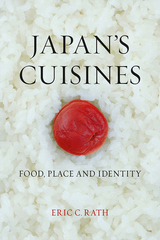
Japan’s Cuisines reveals the great diversity of Japanese cuisine and explains how Japan’s modern food culture arose through the direction of private and public institutions. Readers discover how tea came to be portrayed as the origin of Japanese cuisine, how lunch became a gourmet meal, and how regions on Japan’s periphery are reasserting their distinct food cultures. From wartime foodstuffs to modern diets, this fascinating book shows how the cuisine from the land of the rising sun shapes national, local, and personal identity.

Jesuit Letters From China, 1583–84 was first published in 1986. Minnesota Archive Editions uses digital technology to make long-unavailable books once again accessible, and are published unaltered from the original University of Minnesota Press editions.
The first eight letters from Jesuit missionaries on mainland China were written in 1583–84 and published in Europe in 1586. M Howard Rienstra's translated marks their first appearance in English. The letters chronicle the patient efforts of Michele Ruggieri and the famed Matteo Ricci to learn Chinese, to gain acceptance in Chinese society, and to explain Christianity to a highly sophisticated non-Christian culture. They also described the China of the late Ming dynasty (1368–1644), a country whose immense size and population had excited the imagination of Europeans for generations.
It was Francis Xavier's dream that this mighty kingdom and civilization be opened to the Christian gospel. His dream was at least tentatively fulfilled when Michele Ruggieri was granted residence first in Canton and then in Chao-ch'ing in 1583. Accompanied first by Francesco Pasio and later by Matteo Ricci, Ruggieri initiated the Christian mission in China. Their letters, published initially as an appendix to a volume of Jesuit letters from Japan, were abbreviated and censored by their European editor. In edited form, the letters appeared in 1586 in one French, on German, and three Italian editions.
The China of Ruggieri and Matteo Ricci had remained, however, both suspicious of, and closed to, foreigners - a fact which the original letters do not gloss over. Rienstra was carefully compared the abbreviated and censored versions of these letters in their originals, still preserved in the Jesuit archives in Rome. The letters in general indicate how tenuous the Jesuits' situation was and note candidly that only two baptisms had been performed on the mainland during their stay. These results stand in marked contracts to the reports from Japan of tens of thousands of baptisms and to the reports from Portuguese Macao, where Chinese converts were compelled to wear European cloths and to take European names.
Such Europeanization was thought to be inappropriate to a successful Christian mission in China. Though criticized at the time by their colleagues in Macao, Ruggieri, Pasio, and Ricci committed themselves to a program of cultural respect and accommodation. They learned both written and spoken Chinese, ingratiated themselves with the ruling classes by exhibiting their learning and courtesy, and appeared to have become Chinese themselves. When Matteo Ricci became Ruggieri's successor and his name became synonymous with the success of the Jesuit mission in China, it was to these methods that its success was owed. Unfortunately, the prevailing European ethnocentrism could not accept the concept of cultural accommodation. The editors thus censored the letters to convey the impression of a triumphant and culturally superior Christian mission in China.
Jesuit Letters From China is a publication of the James Ford Bell Library at the University of Minnesota.
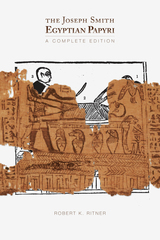
This book marks the publication of the first, full translation of the so-called Joseph Smith Egyptian papyri translated into English. These papyri comprise “The Breathing Permit of Hor,” “The Book of the Dead of Ta-Sherit-Min,” “The Book of the Dead Chapter 125 of Nefer-ir-nebu,” “The Book of the Dead of Amenhotep,” and “The Hypocephalus of Sheshonq,” as well as some loose fragments and patches. The papyri were acquired by members of the LDS Church in the 1830s in Kirtland, Ohio, and rediscovered in the mid-1960s in the Metropolitan Museum of Art in New York. They served as the basis for Joseph Smith’s “Book of Abraham,” published in Nauvoo, Illinois, in 1842 and later canonized.
As Robert K. Ritner, Professor of Egyptology at the Oriental Institute, University of Chicago, explains: “The translation and publication of the Smith papyri must be accessible not merely to Egyptologists but to non-specialists within and outside of the LDS religious community for whom the Book of Abraham was produced.” Dr. Ritner provides not only his own original translations but gives variant translations by other researchers to demonstrate better the “evolving process” of decipherment. He also includes specialized transliterations and his own informed commentary on the accuracy of past readings. “These assessments,” he notes, “are neither equivocal nor muted.” At the same time, they do not have a “partisan basis originating in any religious camp.”
The present volume includes insightful introductory essays by noted scholars Christopher Woods, Associate Professor of Sumerology, University of Chicago (“The Practice of Egyptian Religion at ‘Ur of the Chaldees’”), Marc Coenen, Egyptian Studies Ph. D., University of Leuven, Belgium (“The Ownership and Dating of Certain Joseph Smith Papyri”), and H. Michael Marquardt, author of The Revelations of Joseph Smith: Text and Commentary (“Joseph Smith’s Egyptian Papers: A History”). It contains twenty-eight photographic plates, including color images of the primary papyri (with corrected alignment for Papyrus Joseph Smith 2) and other relevant items.

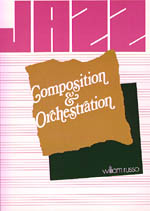

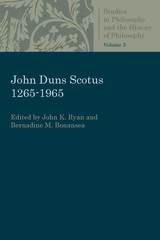

John Updike - American Writers 79 was first published in 1969. Minnesota Archive Editions uses digital technology to make long-unavailable books once again accessible, and are published unaltered from the original University of Minnesota Press editions.
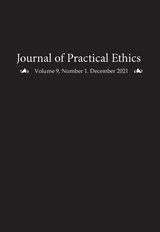
Reciprocity and Resources - Elizabeth Fenton
Prioritizing Parents - Moti Gorin
How AI Can Aid Bioethics - Walter Sinnott-Armstrong and Joshua August Skorburg
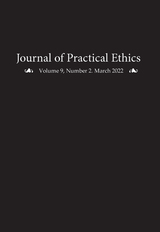
Précis of Evil Online - Dean Cocking and Jeroen van den Hoven
Moral Intensifiers and the Efficiency of Communication - Dale Dorsey
Losing Your Way in the Fog - Philip Kitcher
Self-Presentation and Privacy Online - Carissa Véliz
Moral Fog and the Appreciation of Value - Dean Cocking and Jeroen van den Hoven

Can We Talk?: Communication Moral Concern in an Era of Polarized Politics - Elizabeth S. Anderson
Illusions of Control - Adam Hosein
Defective Normative Powers: The Case of Consent - Massimo Renzo



William A. Settle, Jr. has, for a number of years, trailed the James brothers through the columns of old newspapers and the records of county courts. In his search for the facts concerning these men--heroes to some, criminals to others--he has critically examined the contemporary accounts of their activities and has interviewed men and women who could give eyewitness or close hearsay evidence of them. Employing the techniques of scholarly research, Professor Settle has winnowed the fact from the fiction to produce this study of these most notorious American bandits.

Vivid, authentic, this is the autobiography of a delinquent—his experiences, influences, attitudes, and values. The Jack-Roller helped to establish the life-history or "own story" as an important instrument of sociological research. The book remains as relevant today to the study and treatment of juvenile delinquency and maladjustment as it was when originally published in 1930.

The Jack-Roller tells the story of Stanley, a pseudonym Clifford Shaw gave to his informant and co-author, Michael Peter Majer. Stanley was sixteen years old when Shaw met him in 1923 and had recently been released from the Illinois State Reformatory at Pontiac, after serving a one-year sentence for burglary and jack-rolling (mugging),
Vivid, authentic, this is the autobiography of a delinquent—his experiences, influences, attitudes, and values. The Jack-Roller helped to establish the life-history or "own story" as an important instrument of sociological research. The book remains as relevant today to the study and treatment of juvenile delinquency and maladjustment as it was when originally published in 1930.
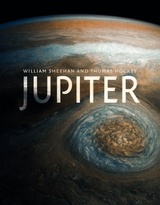
Majestic and untwinkling, Jupiter is the grandest of all planets. It is the largest planet in our solar system and among the brightest objects in the night sky. It shines with a noble, steady luster, and its calming presence has inspired humans for centuries. Jupiter was the “beloved star” of the first serious observers of the planets, the ancient Sumerians and Babylonians, and has inspired poetic utterances from eminent writers such as William Wordsworth and Walt Whitman. It also continues to inspire contemporary astronomers and stargazers, and this beautifully illustrated volume brings our understanding of Jupiter right up to date.
The scientific study of Jupiter is at a watershed: NASA’s Juno space probe has entered orbit about Jupiter to investigate the planet, while information gleaned from improved telescopes and other robotic explorers in space continues to improve our understanding of the planet’s origin, evolution, and composition. Jupiter provides a concise and expert overview of the history of our observations of this largest of planetary spheres, as well as reports on the much-anticipated initial findings from the Juno space probe.
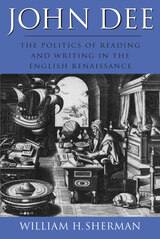
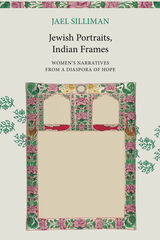


“Washington’s relationship with Tokyo is generally considered the most important of the United States’ 70-odd alliances. In this intimately knowledgeable book, Smith shows how that alliance looks to the Japanese: increasingly unreliable.”—Andrew J. Nathan, Foreign Affairs
“Masterfully traces the interplay of Japan’s military heritage, politics, national sentiment, threats, and alliance with the United States in the formation and development of the Self-Defense Force. Even experts will find new information and insights.”—Admiral Dennis Blair, US Navy (Ret.), former Commander-in-Chief, US Pacific Command
“A must-read for US policymakers responsible for Asia.” —J. Thomas Schieffer, former US Ambassador to Japan
“A highly readable and richly detailed account of Japan’s rearmament and the politics surrounding it.”—Journal of American–East Asian Relations
Japan has one of Asia’s most technologically advanced militaries, yet it has struggled to use its hard power as an instrument of national policy. The horrors of World War II continue to haunt policymakers in Tokyo, but a fundamental shift in East Asian geopolitics has forced Japan to rethink its commitment to pacifism. Its military, once feared as a security liability, now appears to be an indispensable asset.
In Japan Rearmed, Sheila Smith argues that Japan is not only responding to threats from North Korean missiles and Chinese maritime activities, it is fundamentally reevaluating its dependence on the United States as its leaders confront the very real possibility that they may soon need to prepare for war.
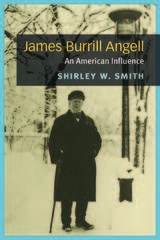

The Journal of Cinema and Media Studies is the peer-reviewed, scholarly publication of the Society for Cinema and Media Studies (SCMS). The journal was renamed (from Cinema Journal) in October 2018.
JCMS’s basic mission is to foster engaged debate and rigorous thinking among humanities scholars of film, television, digital media, and other audiovisual technologies. We are committed to the aesthetic, political, and cultural interpretation of these media and their production, circulation, and reception.
To that end, JCMS is dedicated to intellectual diversity of all kinds. We publish critical inquiry into the global, national, and local circulation of a wide variety of media. We seek to promote a range of approaches to film and media studies and attendant fields, including (but not limited to) digital media, sound studies, visual culture, video game studies, fan studies, and avant-garde and experimental film and media practices. We do not adhere to any methodological approach to media studies, nor do we focus on particular emphases in the field. The journal is open to all areas of humanities-oriented scholarship in media studies, including digital humanities.
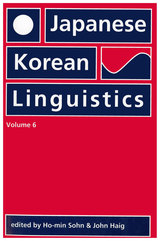

John Jewel, Bishop of Salisbury, was, after Archbishop Parker, the most important English churchman in the decisive Elizabethan era. His organizational work and voluminous doctrinal writings contributed largely to the stabilization of the Anglican Church in the early years of Elizabeth's reign. Among the most effective apologists in an age noted for them, an eminent humanist and patristic scholar, Bishop jewel brought the spirit of the new enlightenment to bear on the problem of authority which naturally arose after the Reformation's initial years of rupture and polemics.
A thorough knowledge of Christian tradition and scriptural interpretation enabled Jewel to find a solution that avoided authoritarianism on the one hand and its opposite extreme of total dependence on individual inspiration on the other. The English Church of his time, strengthened by this solid basis for a continuing via media and by the brilliance of Bishop jewel's exposition of it, took cognizance of its own identity, and the Establishment emerged a reality.
A later generation of Anglican apologists, faced with the challenge of Puritanism, also leaned heavily on the theories Jewel developed. This study of his work and character thus holds a key to the understanding of several of the most important ideas and institutions to evolve during these formative periods of modern civilization.

James Fenimore Cooper - American Writers 48 was first published in 1965. Minnesota Archive Editions uses digital technology to make long-unavailable books once again accessible, and are published unaltered from the original University of Minnesota Press editions.
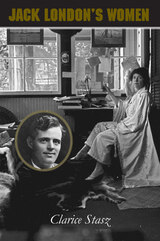
Using newly available letters and diaries from private collections, Stasz brings this diverse constellation of women to life. London was the son of freethinking Flora Wellman, yet found more maternal comfort from freed slave Jennie Prentiss and his stepsister Eliza. His early loves included a British-born consumptive, a Jewish socialist, and an African American. His first wife, Bess Maddern, was a teacher and devoted mother to daughters Bess and Joan, while his second wife, Charmian Kittredge, shared his passion for adventure and served as a model for many characters in his writings. Following his death, the various women who survived him both promoted his legacy and suffered the consequences of being constantly identified with a famous man.
In recasting London's life through the eyes of three generations of women, Stasz manages to untangle his seemingly contradictory attitudes and actions. She also reveals the struggle that ensued, after his death, among family members and scholars over how he should be remembered. What emerges from this well-researched book is a new understanding of London and a compelling portrayal of the women who knew him best.

John Donne's Lyrics was first published in 1962. Minnesota Archive Editions uses digital technology to make long-unavailable books once again accessible, and are published unaltered from the original University of Minnesota Press editions.
Combining modern insight with historical perspective, Professor Stein offers a fresh interpretation of Donne's lyric poems. His method is cumulative; it includes cross references to the religious writing, analysis of individual poems, and their relationship to larger patterns which reflect Donne's poetic mind. Among the specific problems he deals with are those which concern metaphor, symbol, myth, wit, "fictions." "negative theology," consciousness-and-simplicity, "binary" and "ternary" form in poetry, meter and meaning, rationalism and affective language, the visual and the auditory.
Professor Stein demonstrates that to gain insight into the integrity of Donne's poetic mind it is necessary to take seriously two propositions: that Donne is a poetic logician endowed with a talent and love for the unity of imaginative form; and that Donne's poetry, though it is not simple, nevertheless deeply and persistently engages important problems which concern "simplicity." In one of his sermons, Donne wrote: "The eloquence of inferiours is in words, the eloquence of superiours is in action." Professor Stein maintains that in his best poems Donne aspires to the eloquence of action and never to the eloquence of words.
Although the study is focused on Donne's lyrics, the interpretation is based on a long study of all the poems and the prose and on background and foreground materials. In a postscript the author discusses Donne's "modern career."


John Crowe Ransom - American Writers 18 was first published in 1962. Minnesota Archive Editions uses digital technology to make long-unavailable books once again accessible, and are published unaltered from the original University of Minnesota Press editions.

John Wesley North and the Reform Frontier was first published in 1965. Minnesota Archive Editions uses digital technology to make long-unavailable books once again accessible, and are published unaltered from the original University of Minnesota Press editions.
This biography is the absorbing and significant story of a frontier life in America in the nineteenth century. John Wesley North was a carpetbagger in the best sense of the word, and professor Stonehouse points out that no fallacy is more persistent in American history than the generalization that carpetbaggers were evil opportunists peculiar to the southward movement after the Civil War. North's aims, ambitions, and ideas were typical of many carpetbaggers whose common aspiration was the evangelical humanism that flourished in all of the English-speaking world at that time except in the slave-holding South.
Born in upstate New York in 1815, North migrated westward. For the rest of his life he pursued business and political interests with equal zest and championed many social causes. He went to Minnesota, Nevada, and California without enough money to live on, yet contributed significantly to their early history. He was a founder of Minneapolis, proprietor of Fairbault and Northfield, a founder of the University of Minnesota and of the Republican party in Minnesota, and a leader in the state's constitutional convention. In Nevada he helped shape land policy and mining law and found its cities and was president of the 1863 constitutional convention. He helped develop Southern California, where he established Oleander and Riverside. These three states welcomed him as a penniless dreamer, and he added much to the development of each. But in Tennessee, where he arrived with a fortune, eager to help rebuild the war-torn state, his best efforts resulted only in recrimination and his financial ruin. Thus North's life illustrates the sorry truth of General Sherman's comment that the carpetbaggers built the West but were not permitted to build the South.
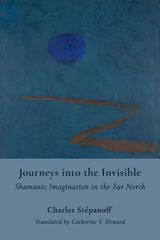
In this book, Charles Stépanoff draws on ethnographic literature and his fieldwork in Siberia to reveal the immense contribution to human imagination made by shamans and the cognitive techniques they developed over the centuries.
Indigenous shamans are certain men and women who are able to travel in spirit in ways that appear mysterious to Westerners but which rely on the human capacity of imagination. They perceive themselves simultaneously in two types of space—one visible, the other virtual—putting them in contact and establishing links with nonhuman beings in their surroundings. Shamans share their experience of spirit travel with their patients, families, or the wider community, allowing them to experience this odyssey through the invisible together.
This work will appeal to anthropologists and to anyone with an interest in learning about the power of imagination from the masters of the invisible, the shamans of the Far North.

Renowned poet Richard Tillinghast’s wanderlust and restless spirit are nearly as well known as his verses. This book of essays captures that penchant to wander, yet Journeys into the Mind of the World is not merely a compilation of travel stories—it is a book of places. It explores these chosen locations—Ireland, England, India, the Middle East, Tennessee, Hawaii—in a deeper way than would be typical of travel literature, attempting to enter not just the world, but “the mind of the world”—the roots and history of places, their political and cultural history, spiritual, artistic, architectural, and ethnic dimensions.
Behind each essay is the presence, curiosity, and intelligence of the author himself, who uses his experience of the places he visits as a way of bringing the reader into the equation. Tillinghast illuminates his travels with a brilliant eye, a friendly soul, and eclectic knowledge of a variety of disparate areas—Civil War history, Venetian architecture, Asian cultures, Irish music, and the ways of out-of-the-way people. This attention to history and cultural embeddedness lends unique perspectives to each essay.
At the heart of his journeys are his deep roots in the South, tracing back to his hometown in Tennessee. The book explores not only Tillinghast’s childhood home in Memphis, but even the time before his birth when his mother lived in Paris. Readers will feel a sense of being everywhere at once, in a strange simultaneity, a time and place beyond any map or guidebook.
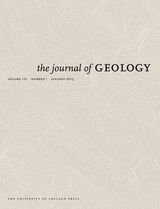
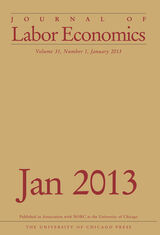


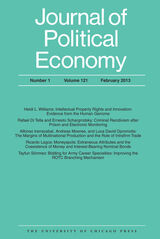
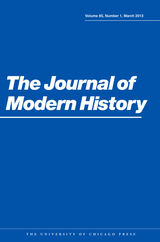
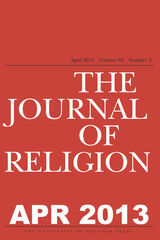

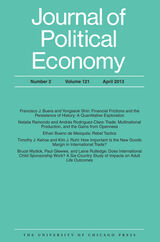

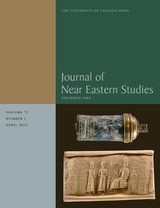
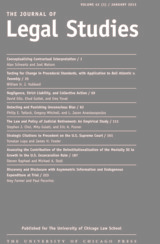


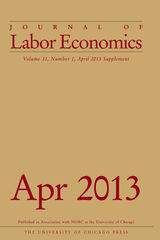

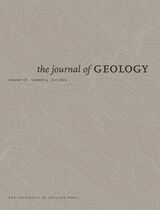
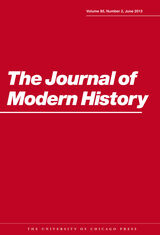


READERS
Browse our collection.
PUBLISHERS
See BiblioVault's publisher services.
STUDENT SERVICES
Files for college accessibility offices.
UChicago Accessibility Resources
home | accessibility | search | about | contact us
BiblioVault ® 2001 - 2024
The University of Chicago Press





